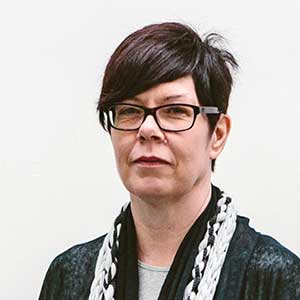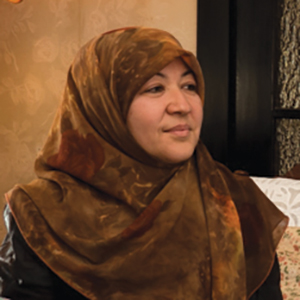Making a connection between clothing and greenhouse gases is drawing a long bow for most people, but take a minute to digest this statistic: every second, a truckload of fabric is either burned or dumped into landfill somewhere in the world. This is emitting 1.2 billion tonnes of carbon dioxide into the air each year, according to a 2017 report by the Ellen MacArthur Foundation.
The same report estimates that by 2050, the textile industry will add 22 million tonnes of microfibres into the ocean and increase its carbon footprint from two per cent to 26 per cent.

They’re alarming figures but they are also a worst-case scenario and there are still reasons for optimism, according to Dr Alison Gwilt, an Adjunct Senior Research Fellow in UniSA’s School of Arts, Architecture and Design.
Sustainability is a buzzword that has been gaining traction in the fashion world in recent years and more than ever, well-known labels are pledging to go green.
Spurred by consumer sentiment – particularly among Generation Y – to create more environmentally-friendly products, fashion designers are turning their attention to recycling, sourcing natural fibres and minimising waste.
In September 2018, Dr Gwilt hosted a one-day workshop at UniSA’s City West campus with some of the world’s leading sustainable design experts, textile students and Australian fashion labels. They discussed ways to tackle clothing waste and stem the throwaway culture endemic among clothes buyers.
“Sustainability revolves around three pillars – economics; people; and the planet. Traditionally, fashion has centred on a linear model where clothes are produced, consumed and then disposed. We need to interrupt that and create a circular economy where we recycle, re-use, repair and create zero-waste designs,” Dr Gwilt says.She believes UniSA can help to shape the local fashion industry and influence the clothing consumption habits of Adelaide residents in several ways.
“Whether our students want to be designers, communicators or supply chain specialists, we can steer them down the sustainable track, so they better understand how to minimise clothing waste. By hosting more creative events, we can also educate consumers and stimulate debate.
“It is essential to bring consumers on board and get their perspective because it is no good designing the perfect sustainable piece of clothing if no one wants to buy it or support the concept of recycling and reusing.”
Consumers can start with small steps, she argues, such as taking better care of clothes, washing them less often, mending and altering them instead of disposing them at the first sign of wear and tear. Exchanging garments and swapping with friends may be a foreign concept for some, but there are plenty of creative ways to be both sustainable and fashionable.
From an industry perspective, the sustainability movement is spawning new business models, including giving consumers the option of leasing clothes through subscription services rather than buying them outright.
Once no longer wearable, they can be sold on to other companies to be recycled into new materials.
Adelaide embraces sustainable movement
Adelaide is well placed to nurture a sustainable fashion design industry, being small enough to react to consumer needs, as well as being resourceful, inquisitive and supportive of new ideas.
The city already has some impressive runs on the board. Local designer, Anny Duff from Good Studios, specialises in locally-made ethically sourced hemp fabrics, recycled nylon and wool.
One of the first in Adelaide to embrace the “slow fashion” movement, Duff is now supported by the likes of vintage enthusiast Emily Sheahan (SWOP Adelaide) and Natalie Ivanov (RE-SWIM CLUB). All three played a major role in this year’s Adelaide Fashion Festival in October, which set aside a SLOW Saturday specifically for sustainable local designs.
Adelaide not-for-profit social enterprise, From Found, is also making an impression, using reclaimed, recycled and recovered textiles to make garments crafted by women from refugee and asylum seeker backgrounds.

From Found co-founder Mardiya Jawad is a UniSA alumna, graduating with a Bachelor of Social Work in 2014.
The Iraqi refugee says her organisation has two main objectives: to reduce clothing waste and to create job opportunities for newly arrived asylum seekers and refugees.
“I struggled to find employment when I arrived in Australia in 2000, so know how difficult it is for refugees, particularly those with few skills,” Jawad says. “From Found not only provides women with a wage; it empowers them in all sorts
of ways, building their English language skills, confidence and creativity.”
One of the world’s leading fashion retailers, Sweden’s H&M, which has just opened its doors in Rundle Mall, is an early adopter of the circular economy, encouraging its customers to drop off unwanted clothes for recycling in return for a voucher.
“They have done an amazing amount of work in this area,” Dr Gwilt says, “collecting more than 17,000 tonnes of textiles to date – the equivalent of 89 millionT-shirts. These clothes are recycled as insulation material, carpet underlay, stuffed toys and even shoe inlays.”
Wool makes the grade when it comes to fashion
The State’s wool producers are also in a prime position to capitalise on the growing interest in luxury, sustainable wool garments in Asia, particularly Australian wool.
Not only is wool natural, biodegradable and 100 per cent recyclable, it is suitable for both warm and cold weather. Wool breathes well and wicks away perspiration, so can be worn several times before washing, saving both water and energy use.
“Wool is ideal for China’s weather – hot, dry summers and freezing winters,” says Joe Keynes, South Australia’s representative on the Wool Producers Australia board.
Keynes says China has an insatiable demand for Australian wool and a growing number of the State’s merino producers are benefitting from the sustainable fashion movement.
Eighty per cent of Australia’s quality wool is now sent to China – 271,000 tonnes last year alone – compared to just four per cent 20 years ago. Quality Australian wool also commands a high price tag, close to $21 a kilogram.
“It is both sustainable and fashionable, which is a winning combination,” Keynes says.
Millennials flex consumer muscles in fashion
Through social media engagement and increased pressure for corporate accountability, Gen Y consumers can shape the retail clothing market and opt for sustainable products.

UniSA journalism student and sustainable-fashion blogger Amy Vogelsang, says she leverages her power as a consumer in the hope of changing companies’ practices.
“I try to do a lot of op shopping, rather than buying into brands that don’t conduct themselves ethically,” she says.
“I also try to look at brands that are considered to be more ethical and support them.”
Despite the popularity and social currency of sustainable fashion, ethical practices and sustainably-sourced materials can sometimes translate to much heftier price tags.
For students and younger members of Generation Y, sustainable choices are not always financially viable, regardless of their convictions to shop ethically.
Amy, 20, says there are creative ways around the challenges of maintaining an up-to-date sustainable wardrobe, which she often details on her environmentally-themed Gaia Blog.
“With ethical brands, you could be paying a minimum of $60 for a basic T-shirt just because you want to own something you can feel good about,” she says.
Amy says although op shopping is good, it can be a more challenging option if you’re looking for the latest fashions.
“It’s better to buy something you know you will get a lot of wear out of, to borrow something from a friend’s wardrobe, or just make sure you wear what you buy more than once.”